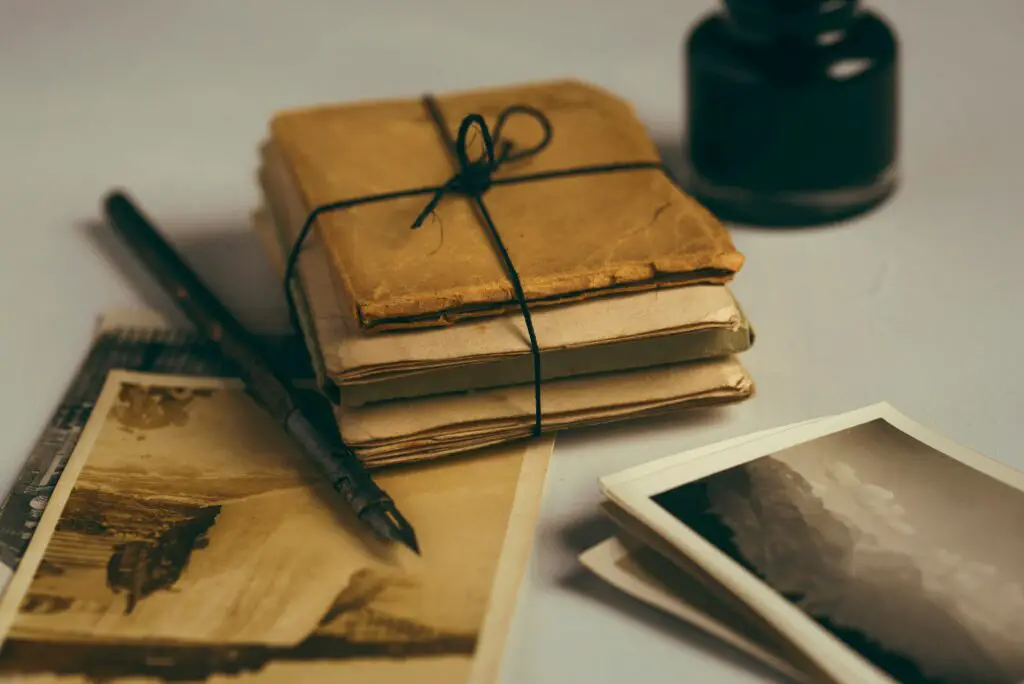1. Choose the Right Journal Format

When starting a collector’s journal, the first decision is choosing the format that fits your needs. Some prefer traditional leather-bound notebooks for their nostalgic charm, while others opt for modern digital journaling apps. Both have their perks—physical journals give a tactile connection to history, while digital options offer flexibility with photos and easy searches. Decide which speaks to you more. For many collectors, the act of writing down their finds can feel like an extension of the collecting process itself.
2. Organize Your Collection Categories
Before diving into documenting your finds, it helps to organize your collection into clear categories. Whether it’s vintage postcards, old tools, or antique furniture, group similar items together. This will not only make journaling easier but also allow you to track the history and value of items over time. It can be as simple as dedicating a few pages for each category in your journal or using different sections in a digital app.
3. Record the Date and Place of Acquisition
Every antique comes with a story, and a big part of that story is how and when it entered your life. Whether you picked up a gem at a flea market or inherited a family heirloom, jotting down the date and location of acquisition adds a personal touch to your journal. Years later, you’ll be glad you captured those details, which can help you trace the provenance of each item. Furthermore, by recording the acquisition details, you’re creating a traceable history for each item, which can be a big help if you ever decide to sell it. Knowing where and when an item was obtained, particularly if it came from a well-known auction or a notable estate sale, can increase its value. This data also proves invaluable when assessing the item’s provenance or legitimacy, as it can help trace its journey over time. Furthermore, for insurance or tax purposes, documenting these details ensures that you have an accurate record of your collection’s history, making it easier to substantiate the value of items if necessary.
4. Include a Detailed Description
When it comes to antiques, every little detail matters. Take the time to write a thorough description of each piece in your journal. Note the material, size, color, and any distinguishing features like maker’s marks or engravings. This is especially important for unique or rare finds, as it can help identify the item’s historical context or value down the line.
5. Add Photos to Your Entries

A picture is worth a thousand words, especially when documenting your collection. Including photographs in your journal can help you capture intricate details that are hard to describe in writing. If you’re using a physical journal, consider printing small photos to glue next to your descriptions. For digital journals, embedding high-quality images is easy and effective.
6. Research and Document the History
Digging into the backstory of your antiques can be one of the most exciting parts of collecting. Researching the item’s origins, maker, and historical significance not only enriches your understanding but adds depth to your journal entries. Write down any interesting facts, relevant dates, or connections to historical events. Your journal will become a treasure trove of knowledge.
7. Track the Condition Over Time
Antiques are fragile, and their condition can change over the years. In your collector’s journal, it’s useful to track the condition of each item when you acquire it and note any changes that occur over time. This might include wear and tear, restoration work, or preservation efforts. Having this record can also help if you ever decide to sell or pass down the item.
8. Record Appraisals and Valuations
Over time, you may want to get some of your items appraised to understand their market value. Keeping a record of these appraisals in your journal can be extremely helpful. Make sure to note the date of the appraisal, the appraiser’s details, and the estimated value of the piece. This can help you track the changing worth of your collection over time.
9. Note Any Provenance or Ownership History
Provenance can greatly affect the value and significance of an antique. If you know or discover any details about an item’s previous owners, document them in your journal. This could include family history, famous past owners, or even records of where the item has traveled. Provenance not only adds to the item’s historical interest but can also boost its value.
10. Use a Consistent Format for Entries
When documenting your antique finds, consistency is key. Develop a format for each journal entry that includes essential information such as acquisition date, description, condition, and any relevant history. This will help keep your entries organized and easy to reference. Consistency also allows you to quickly compare items across your collection.
11. Make Space for Future Updates
Your collector’s journal is a living document, and as you acquire more pieces or learn new information about your finds, you’ll want to update it. Leave space in your entries for additional notes, new photos, or updated appraisals. This way, your journal can grow alongside your collection, evolving into an even more comprehensive record.
12. Personalize Your Journal

Above all, make your journal reflect your personality and passion for collecting. Whether it’s adding sketches, using your favorite pens, or creating custom templates in a digital format, the journal should feel like an extension of you. The more personal it is, the more likely you’ll enjoy maintaining it, and it will serve as a cherished record of your journey as a collector.
Keeping a collector’s journal is not just about documenting facts—it’s about preserving the stories, memories, and history behind each item in your collection. As time goes on, your journal will become an invaluable tool, not only for tracking your collection’s value but for capturing the joy of discovery and the thrill of the hunt.


